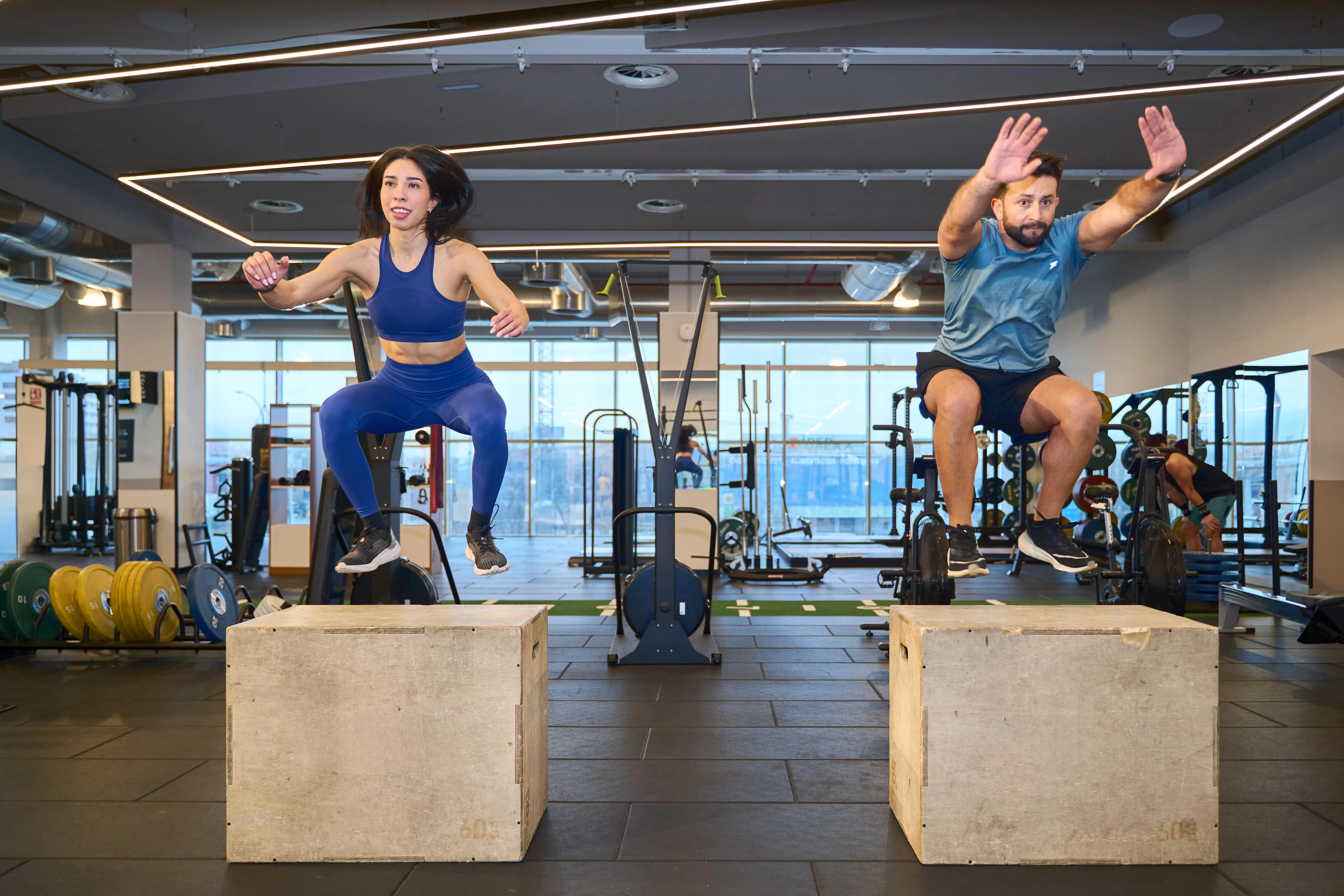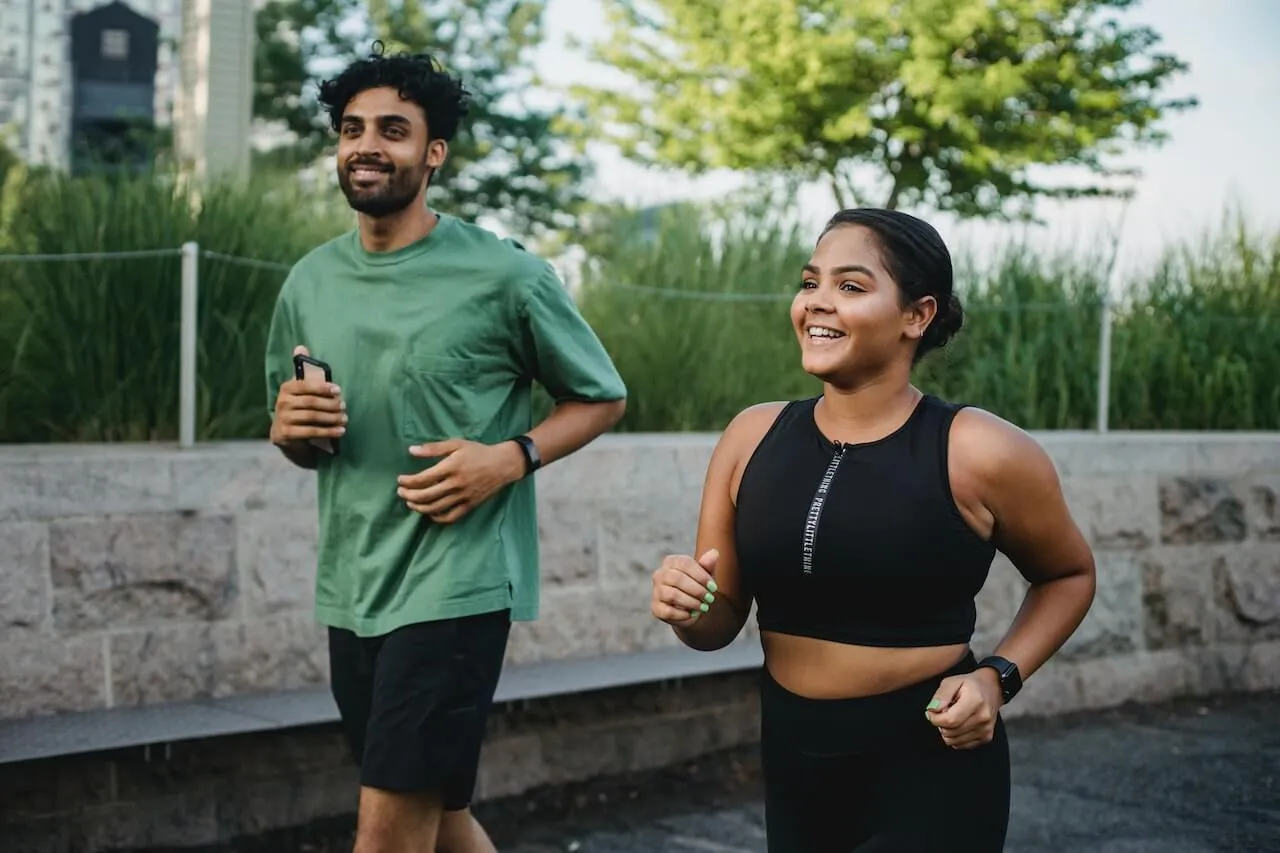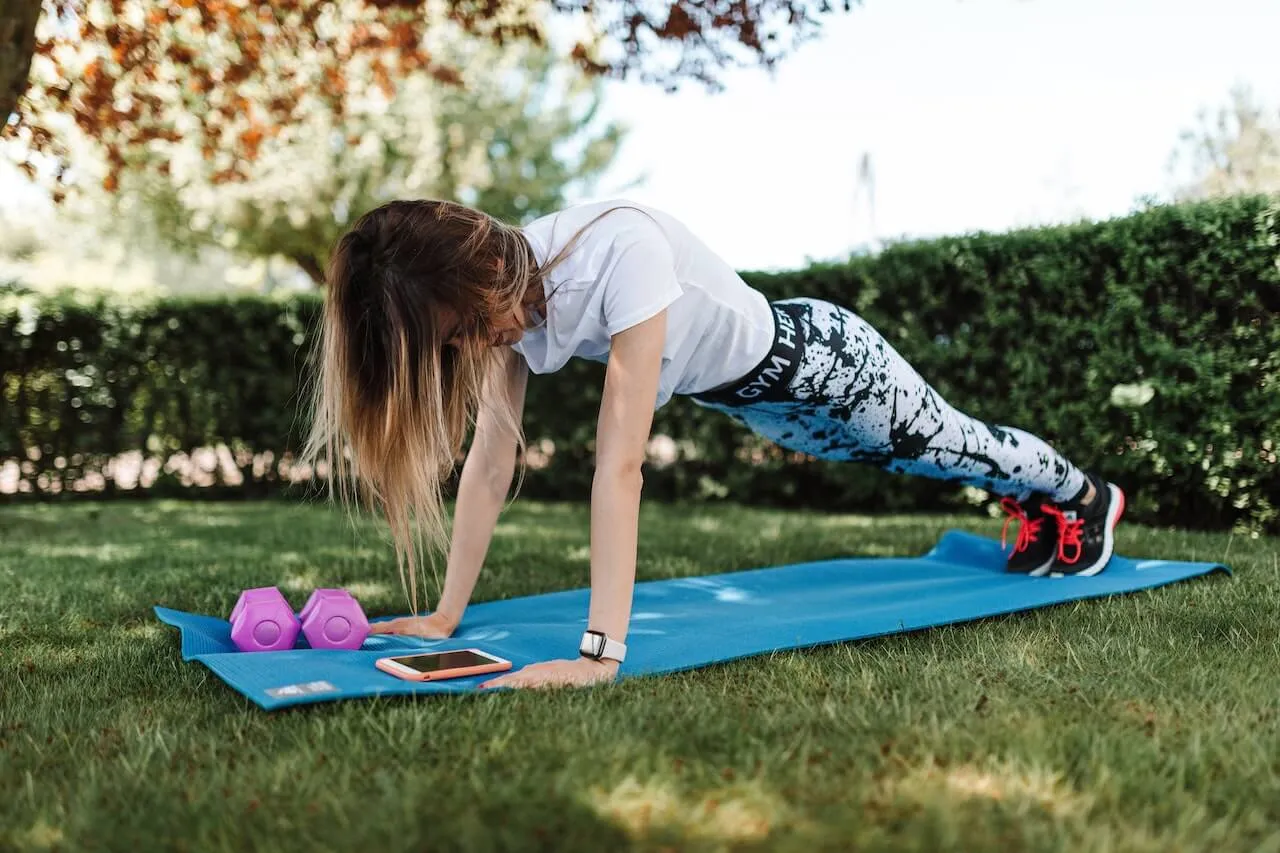Key Takeaways
- Cardiovascular exercise lowers blood sugar levels immediately by utilizing glucose as fuel and enhancing insulin sensitivity for hours after exercise.
- Strength training builds muscle, enhancing long-term glucose storage and insulin response while supporting metabolic health as you age.
- Combining cardio and strength training delivers the best results for blood sugar control, especially during intense summer conditions, by addressing both immediate and long-term needs.
{{mid-cta}}
It is finally summer, which means longer days in the sunshine, warmer temperatures, a change in daily routines, and potentially a disruption of eating patterns and staying hydrated. Despite being more active outdoors in the summer weather (and maybe more active in general), it is important to choose the right exercise for your fitness goals that also supports your metabolic health, as the effects on your blood sugar levels and metabolic function are different in the hotter weather.
This article compares the short and long-term effects of strength training and cardiovascular exercise on blood sugar control while providing tips and strategies for navigating exercise in the summer. Each type of exercise may influence blood sugar spikes and insulin sensitivity differently, so stay tuned as we break down the pros and cons of lifting weights versus going for a run and how you can strategically blend both into a super-effective, efficient, and summer-friendly hybrid workout routine.
How Cardio Affects Glucose: The Immediate Regulator

Cardiovascular exercise is one of the most effective tools for managing blood sugar both immediately and in the long run. When you engage in cardio activities, such as walking, running, swimming, or cycling, your muscles require extra fuel to maintain movement at any intensity for as long as possible. That fuel comes mainly from the sugar in your blood (glucose), which your body burns for energy during the workout. As a result, blood sugar levels will decrease immediately, helping to reduce a problematic spike.
After you finish exercising, your body actually stays more sensitive to insulin for hours, meaning it can continue to move sugar out of your bloodstream and into your cells while you are resting. This is beneficial both for storing sugar in the form of glycogen for later use and for avoiding unnecessary spikes and crashes throughout the rest of the day.1
Seeing significant effects on your blood sugar doesn’t necessarily require a hard or long workout either. Even just a 10 to 15-minute walk after meals can make a big difference. Research shows that taking a short walk can help prevent post-meal glucose spikes, allowing your body to handle carbs more effectively. That said, if your goal is to achieve better blood sugar control long term, then finding time for consistent zone 2 cardiovascular exercise is a great place to start.
Zone 2 refers to your heart rate and represents a low-intensity level of movement, where you can still converse while exercising. This level of intensity has been shown to improve how your body uses fat and glucose for fuel, keep insulin sensitivity high, and not spike stress hormones like cortisol.2,3 Especially during the summer, when heat, poor sleep, and unpredictable schedules can throw off your metabolism, consistent cardio at an appropriate intensity can help keep your blood sugar stable without depleting your energy for the day.
How Strength Training Supports Glucose: Long-Term and Sustainable

Strength training, whether through lifting weights, adding resistance, or performing bodyweight exercises, can help regulate your blood sugar levels by increasing muscle mass. Bigger, stronger muscles like to hold onto more sugar even at rest, so they have fuel for later use. Thus, less glucose hangs around in the bloodstream, where it can cause more harm than good. When doing a harder strength training session, you may notice a brief spike in your blood sugar if you were to measure it in the moment. This is because your body releases the stored glucose for quick energy. However, once the workout ends, your muscles become more sensitive to insulin, allowing glucose to be shuttled back into the cells and returning your blood sugar levels to a healthy range more quickly.
What happens over time? With consistent strength training, individuals may experience a reduction in markers like A1C, an improvement in how their body handles carbohydrates throughout the day, and enhanced body composition, including increased muscle mass, even as they age. Having a strength training routine is a simple yet highly effective strategy for greater resilience against insulin resistance, and a surefire way to maintain steady blood sugar levels and optimal health for many years to come.
HIIT: Powerful But Might Spike Glucose First
High-Intensity Interval Training (HIIT) can be a powerful tool for improving blood sugar levels; however, participating in HIIT classes may come with a few caveats. While alternating between short bursts of all-out effort with periods of rest or low-intensity movement, these workouts burn through stored sugar (glycogen) very quickly. That rapid depletion helps boost insulin sensitivity, meaning your body gets better at clearing glucose from your blood after the workout. Over time, regular HIIT sessions can improve long-term markers, such as A1C, and help fine-tune how your body handles carbohydrates, even with just a few sessions per week.4,5
Despite the numerous research-supported benefits of HIIT training as a safe and effective means of blood sugar control, individuals new to HIIT-style workout programs should proceed with caution. Exercising at a high intensity requires glucose for fuel and will naturally increase your circulating cortisol. However, your body may release extra glucose into the bloodstream during and immediately after HIIT workouts, which can be problematic for those with severely undercontrolled diabetes.
The temporary spike in blood sugar and cortisol is normal for everything, but it’s something to be mindful of, especially if you’re already dealing with blood sugar instability or high stress levels. Yet, when done in moderation and paired with proper recovery, HIIT in the appropriate volume can enhance your metabolic control, increase cardiovascular fitness, and deliver long-term results.6,7
Combining Strength + Cardio: The Metabolic Power Duo

When we consider the different effects of cardio and strength training on blood sugar control, we actually realize that combining the two could be the ultimate metabolic power couple. Cardio exercise acts like a vacuum, quickly clearing glucose from the bloodstream during and after exercise. Strength training builds muscle, which increases your body’s ability to store and use that glucose more efficiently over time. Both improve insulin sensitivity, but together they create a stronger, longer-lasting effect on overall metabolic health. Let’s dive a bit deeper.
A systematic review and meta-analysis published in 2021 compared the effects of aerobic exercise, resistance training, and combined exercise on metabolic syndrome parameters and cardiovascular risk factors. Researchers found that combined exercise was more effective than either modality by itself in improving weight, waist circumference, triglycerides, cholesterol, glucose, and insulin levels.8 More scientific research articles have shown similar significant improvements in metabolic parameters with combined exercise training in as little as 12 weeks.9
The American Diabetes Association and the American College of Sports Medicine recommend engaging in at least 150 minutes per week of moderate-intensity aerobic physical activity or at least 75 minutes per week of vigorous aerobic exercise, along with an additional two to three days per week of resistance-based exercise that targets major muscle groups.10,11 According to these organizations, as well as the literature, this mix delivers immediate glucose control, long-term insulin sensitivity, and the metabolic resilience needed to thrive throughout life.
Summer-Smart Exercise Strategies for Glucose Control
Summer heat and schedule changes can make it harder to stay consistent with workouts, which is why focusing on the right strategies can keep your fitness routine on track and further support stable blood sugar levels.
Here are simple, effective ways to adapt your exercise routine for the summer heat and humidity:
- Keep workouts cooler: Aim to exercise early in the morning or in shaded, air-conditioned environments to avoid heat spikes that stress your body. Staying hydrated is non-negotiable, as dehydration can raise blood sugar levels and reduce workout performance.
- Adjust timing for glucose control: Exercising after meals or in the evening can help reduce post-meal blood sugar spikes. A short walk or light workout 30 to 60 minutes after eating can make a big difference in how your body processes glucose, especially when done as a consistent habit.
- Short sessions still count: You don’t need long, intense workouts to see results. Just 15-minute walks or quick strength circuits can help your muscles pull glucose from your bloodstream and improve insulin sensitivity.
Real-World Tips & Monitoring
Managing blood sugar in conjunction with an exercise program doesn’t have to be complicated; however, having a strategy can help keep you accountable and understand how your blood sugar responds to different forms of physical activity, so you get the most out of your workouts. Here are a few simple, realistic tips to guide you:
- Track before and after workouts: If you use a glucose monitor or CGM like the one from Signos, make sure to check your blood sugar levels before, immediately after, and one to two hours post-workout. This will provide you with a more accurate understanding of how various types of exercise affect your blood sugar levels.
- Watch for patterns, not just numbers: A single data point will not give you the full story, and one high or low reading isn’t everything. Observe how your readings are trending over time. For example, see if strength training in the afternoon lowers your fasting glucose the following morning, or if doing cardio while fasted is more beneficial for your blood sugar stability throughout the day.
- Alternate workout types throughout the week. Again, aim for at least 150 minutes of moderate cardio (such as brisk walking or cycling) and two to three days of strength training each week. You can always double up on one day if that's easiest, such as doing 20 to 30 minutes of strength training and then going for a brisk 30-minute walk.
- Start with strength, finish with cardio: Lifting weights before cardio can help deplete glycogen stores, making your body more efficient at burning glucose and fat during the cardio session. Additionally, research articles suggest that incorporating strength training into a cardio activity regimen can lead to more positive effects on blood sugar stability in individuals with diabetes.12
- Maintain sustainable intensity: Zone 2 cardio and moderate strength training are often more effective for blood sugar control than frequent all-out efforts, especially if you’re under stress or new to exercise. That said, research supports the use of both moderate and high intensity interval training for the treatment and management of blood sugar control, so choose the intensity that feels right for you and your body.13
The Bottom Line

Maintaining a regular and consistent exercise program is one of the most effective strategies for managing blood sugar levels, both in the short term and long term. Aerobic activities, such as walking and biking, can help lower blood sugar levels immediately and relieve stress. In contrast, more anaerobic or resistance-based activities help build the muscle needed for long-term glucose control.
Together, they create an incredibly effective combination, which is especially important when combating the metabolic stresses of summertime conditions. Remember, the most important tips for success are to maintain consistency, listen to your body, and monitor your responses to exercise to determine what works best for you. Perfection isn’t the goal, progress is.
Learn More About Signos’ Expert Advice
If you have more questions on improving your health, fitness, and nutrition, seek the expert advice of the Signos continuous glucose monitor and the Signos team. A continuous glucose monitor (CGM) can give you the insights to make smarter nutrition and exercise choices. The Signos app offers a personalized program to help you achieve your health goals.
Topics discussed in this article:
References
- Opoku, B., de Beer-Brandon, C. R., Quartey, J., & Mshunqane, N. (2023). Effects of brisk walking on fasting blood glucose and blood pressure in diabetic patients. Journal of Insulin Resistance, 6(1), 77.
- Attia, P. A guide to Zone 2 training: its profound impact on health, detailed training instructions, addressing male and female differences, and more.
- Sigal, R. J., Kenny, G. P., Boulé, N. G., Wells, G. A., Prud'homme, D., Fortier, M., ... & Jaffey, J. (2007). Effects of aerobic training, resistance training, or both on glycemic control in type 2 diabetes: a randomized trial. Annals of internal medicine, 147(6), 357-369.
- Sabag, A., Little, J. P., & Johnson, N. A. (2022). Low‐volume high‐intensity interval training for cardiometabolic health. The Journal of physiology, 600(5), 1013-1026.
- Reljic, D., Frenk, F., Herrmann, H. J., Neurath, M. F., & Zopf, Y. (2021). Effects of very low volume high intensity versus moderate intensity interval training in obese metabolic syndrome patients: a randomized controlled study. Scientific reports, 11(1), 2836.
- Little, J. P., Jung, M. E., Wright, A. E., Wright, W., & Manders, R. J. (2014). Effects of high-intensity interval exercise versus continuous moderate-intensity exercise on postprandial glycemic control assessed by continuous glucose monitoring in obese adults. Applied physiology, nutrition, and metabolism = Physiologie appliquee, nutrition et metabolisme, 39(7), 835–841. https://doi.org/10.1139/apnm-2013-0512
- Carrillo-Arango, H. A., Gonzalez, D. A., Ordoñez-Mora, L. T., Atencio-Osorio, M. A., Triana-Reina, H. R., & Izquierdo, M. (2025). Acute Effect of High-Intensity Interval Training on Postprandial Glycemia in Overweight and Obese Individuals: A Scoping Review. Nutrients, 17(8), 1364. https://doi.org/10.3390/nu17081364
- Liang, M., Pan, Y., Zhong, T., Zeng, Y., & Cheng, A. S. (2021). Effects of aerobic, resistance, and combined exercise on metabolic syndrome parameters and cardiovascular risk factors: a systematic review and network meta-analysis. Reviews in cardiovascular medicine, 22(4), 1523-1533.
- Ambelu, T., & Teferi, G. (2023). The impact of exercise modalities on blood glucose, blood pressure and body composition in patients with type 2 diabetes mellitus. BMC Sports Science, Medicine and Rehabilitation, 15(1), 153.
- Oliveira, C., Simões, M., Carvalho, J., & Ribeiro, J. (2012). Combined exercise for people with type 2 diabetes mellitus: a systematic review. Diabetes research and clinical practice, 98(2), 187-198.
- Colberg, S. R., Sigal, R. J., Fernhall, B., Regensteiner, J. G., Blissmer, B. J., Rubin, R. R., ... & Braun, B. (2010). Exercise and type 2 diabetes: the American College of Sports Medicine and the American Diabetes Association: joint position statement. Diabetes care, 33(12), e147-e167.
- Yardley, J. E., Kenny, G. P., Perkins, B. A., Riddell, M. C., Malcolm, J., Boulay, P., Khandwala, F., & Sigal, R. J. (2012). Effects of performing resistance exercise before versus after aerobic exercise on glycemia in type 1 diabetes. Diabetes care, 35(4), 669–675. https://doi.org/10.2337/dc11-1844
- Kanaley, J. A., Colberg, S. R., Corcoran, M. H., Malin, S. K., Rodriguez, N. R., Crespo, C. J., ... & Zierath, J. R. (2022). Exercise/physical activity in individuals with type 2 diabetes: a consensus statement from the American College of Sports Medicine. Medicine and science in sports and exercise, 54(2), 353.




.svg)





.webp)




.svg)
.svg)
.svg)
.svg)
.svg)
.svg)
.svg)
